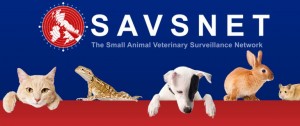The work is taking place at the Small Animal Veterinary Surveillance Network (SAVSNET) – a joint venture between The University of Liverpool and the British Small Animal Veterinary Association (BSAVA) – and The University of Manchester’s School of Computer Science.
Currently at the forefront of veterinary health informatics, SAVSNET collect and analyse information about the healthcare of small animals from over 100 individual surgeries across the UK. Continually increasing its dataset, almost 2000 consultations are captured each weekday using RoboVet, a practice management system developed by Vet Solutions.
From cats and dogs to gerbils and rabbits, data is collected in real-time allowing the SAVSNET team to develop a better understanding of the factors associated with diseases affecting companion animals. Real-time information also creates the potential for identification of abnormal trends in animal health and creates an opportunity for professionals to respond quickly and effectively.
Alongside the wealth of information gathered from veterinary practices, SAVSNET collaborates with diagnostic labs to collect more detailed information providing researchers with additional context and a more holistic picture of small animal health. By collating a large volume of clinically-relevant data, within a framework of good ethical and data management practice, SAVSNET are filling a deficit in epidemiological and public health knowledge regarding small animals, and providing a much-needed and valuable resource.
The healthcare text analytics team at the University of Manchester are contributing to the project by sharing their wealth of experience in obtaining meaning from the case notes in a human health care setting. Having advanced techniques for large-scale extraction of information from unstructured clinical narratives that are stored in electronic healthcare records, the team in Manchester are able to support the SAVSNET project in achieving similar results, designed to inform and support clinical decision making.
The current collaboration between the two teams will help vets and researchers improve the health and welfare of small animals by increasing their understanding of why and when animals present at surgeries. The large amounts of data that are being created combined with the analytical ability of SAVSNET’s multidisciplinary team raises the potential for collaboration in similar ventures in human healthcare. Ultimately, both human and veterinary public health could benefit.
Dr Jenny Newman has been recruited to help develop the data-mining techniques that will enable the analysis of information from the free-text component of the animals’ consultation records. Jenny’s supervisors are Doctors Phil Jones, P-J Noble and Alan Radford from Liverpool’s Institute of Infection and Global Health and Dr Goran Nenadic from The University of Manchester’s School of Computer Science.
Dr Jenny Newman said: “This collaborative project is the perfect fusion of my interests and provides a wealth of opportunities working within an enthusiastic and dynamic team; most importantly it provides the real potential to improve the health and welfare of the animals with whom we share our lives.”

